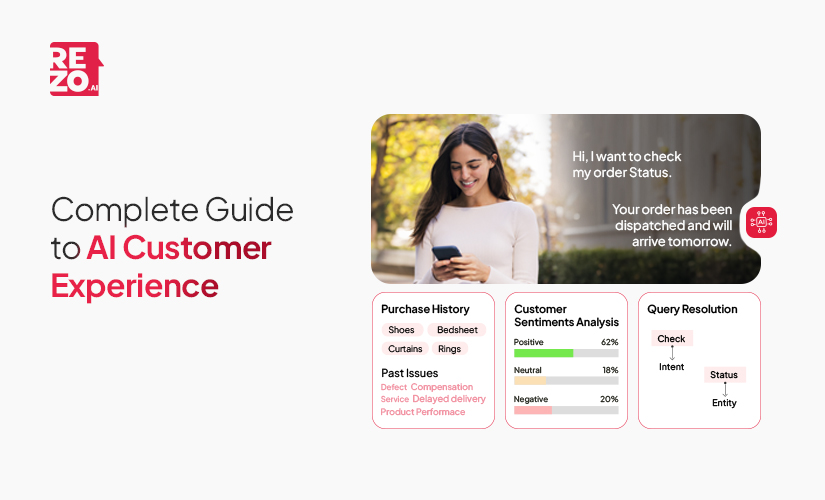
How to Reduce Customer Churn

How to Reduce Customer Churn


In an ideal world, you may not have to wonder how to reduce customer churn, your competitors may not try to take your customers, and your consumers may have no issue with your product or services.
But, here we are! With so many options in the market, its only natural for customers to wonder, ‘What’s Better?’, and hence, they churn.
While customers will always look for the best, you can definitely ensure that a majority of them stay.
What is Customer Churn?
Customer churn refers to the rate at which customers stop doing business with a company over a specific period. It is a critical metric that measures customer attrition and has a significant impact on a company's revenue and growth potential. Understanding and effectively reducing customer churn is vital for sustaining long-term business success.
Why Should it matter?
Well, if your customer has decided to move on, you can surely let it be and put your focus on the next. But it’s not that simple.
According to Forrester, it takes 5X costing to acquire a new customer than retaining an existing one.

There are multiple reasons why reducing customer churn should matter:
- Loss of revenue: When customers churn, you lose out on potential revenue streams and face decreased profitability.
- Drop in customer experience: Churned customers often indicate a decline in their experience with the company.
- Inefficient resource allocation: High customer churn places a strain on resources as companies need to allocate more time, effort, and costs towards acquiring new customers to compensate for the loss.
Read More: A Complete Guide to Quality Parameters in BPO
Causes of Customer Churn
There can be multiple reasons why customers drop. Understanding the causes of customer churn is crucial for developing effective churn-reduction strategies.
- Price: Customers may churn if they find better pricing options elsewhere. Competitor offerings or discounts can entice customers to switch brands for cost savings.
- Product/market fit: If a product or service fails to meet customer expectations or adequately address their needs, they may choose to switch to a competitor that provides a better fit.
- User experience: Poor user experience, such as slow performance, cumbersome processes, or an unintuitive interface, can frustrate customers and drive them away.
- Customer experience: A lack of personalized interactions, unresponsive customer support, or a general feeling of being undervalued can result in churn.
15 Tips to Reduce Customer Churn
Now that you know the different reasons why your customers may churn, let’s quickly jump to how you reduce it. Here are 15 tips to keep customers engaged and loyal:

1. Offer exceptional customer experience
Providing prompt, omnichannel, and professional support is crucial in building trust and loyalty among customers. This not only retains existing customers but also attracts new ones through positive word-of-mouth.
2. Simplify the onboarding process
Make it easy and straightforward for customers to get started. Quick and hassle-free onboarding allows customers to experience the value of your product or service promptly, enhancing their initial impression.
3. Conduct customer sentiment analysis
Regularly gather feedback from your customers through sentiment analysis. This helps identify areas where your business can improve and allows you to address any concerns or issues customers might have in a timely manner.
4. Personalize customer interactions
Tailor messages and promotional offers based on individual customer preferences and behavior. Personalized interactions make customers feel valued and understood, thereby improving their overall experience.
Read More: Omnichannel vs Multichannel: Unlocking the Power of Customer Engagement
5. Build relationships with customers
Engage with customers on a personal level through personalized communication and social media interactions. Building strong relationships with customers helps to build a loyal customer base.
6. Proactively address customer issues
Anticipate and resolve potential issues before they impact the customer experience. Proactive complaint analysis demonstrates your commitment to customer satisfaction.
7. Continuously improve products and services
Consistently update and enhance your offerings to meet evolving customer needs and expectations. This demonstrates your commitment to innovation and customer satisfaction.
8. Implement loyalty programs
Reward customer loyalty with exclusive benefits, discounts, or early access to new features or products. Loyalty programs incentivize repeat business and enhance customer retention.
9. Leverage AI-powered chatbots and voicebots
Deploy AI-powered bots to provide 24/7 support, instant answers, and personalized recommendations. This modern approach to customer experience ensures that help is always available, improving the customer experience.

10. Offer value-added content
Share informative and relevant content that helps customers succeed. Value-added content not only provides customers with useful information but also positions your business as an expert in your field.
11. Keep pricing competitive
Regularly evaluate your pricing strategies to ensure they remain competitive in the market. Offering fair and competitive pricing helps attract and retain customers.
12. Provide ongoing customer education
Empower customers with resources, tutorials, and webinars to maximize the value they receive from your products or services. Customer education increases product usage and customer satisfaction.
13. Foster a customer-centric culture
Train and empower your employees to prioritize and deliver exceptional customer experiences. A customer-centric culture drives customer satisfaction and loyalty.
14.Utilize customer feedback loops
Continuously iterate and improve based on customer feedback. Regular feedback loops allow you to stay ahead of evolving customer needs and expectations.
15. Build a strong brand identity
Develop a brand that resonates with your customers and creates an emotional connection. A strong brand identity differentiates you from competitors and drives customer loyalty.

How to Predict & Analyze Customer Churn
Predicting and analyzing customer churn can help businesses take proactive measures to retain customers. Here's how you can do customer churn prediction and analysis:
- Identify leading indicators: Determine the customer behaviors and metrics that precede churn, such as a decrease in usage, frequency of support tickets, or low engagement.
- Utilize data analytics: Leverage AI-powered analytics solutions to analyze customer data and identify patterns that indicate potential churn risks.
- Implement predictive models: Develop models that use historical data and customer attributes to predict churn probabilities for individual customers.
- Act on insights: Once potential churn risks are identified, take targeted actions such as personalized offers, proactive reach-outs, or additional support resources to retain customers.
By leveraging conversational AI and data-driven insights, you can proactively address potential churn, retain customers, and drive revenue growth.
A seamless customer experience goes a long way in reducing customer churn. When you provide your customers with personalized suggestions, quick FAQ resolutions and re-engage with your customers, retention rate improves. Learn in detail about how AI-powered solutions can help you. Schedule a free demo now!
Frequently Asked Questions (FAQs)

Take the leap towards innovation with Rezo.ai
Get started now














